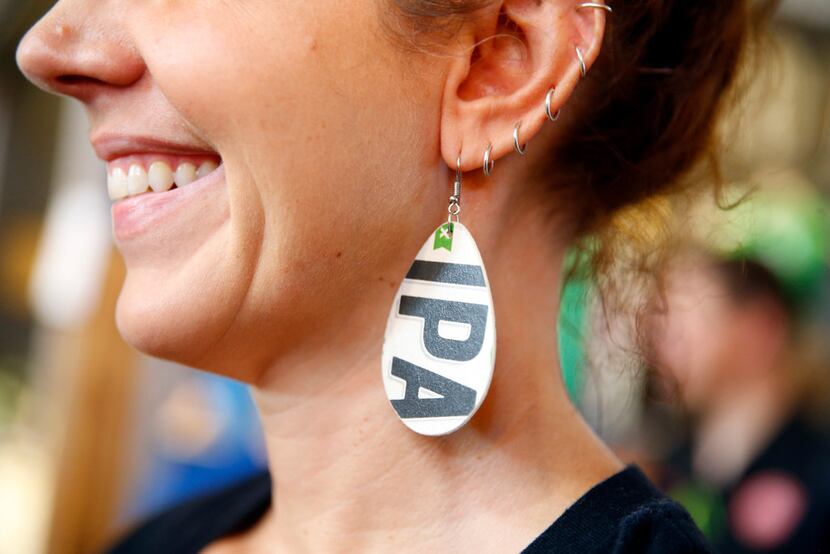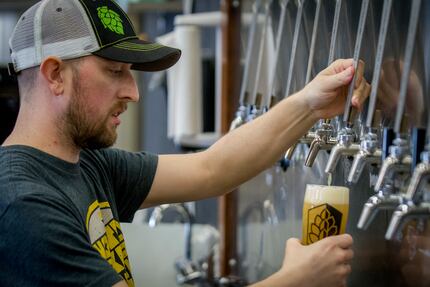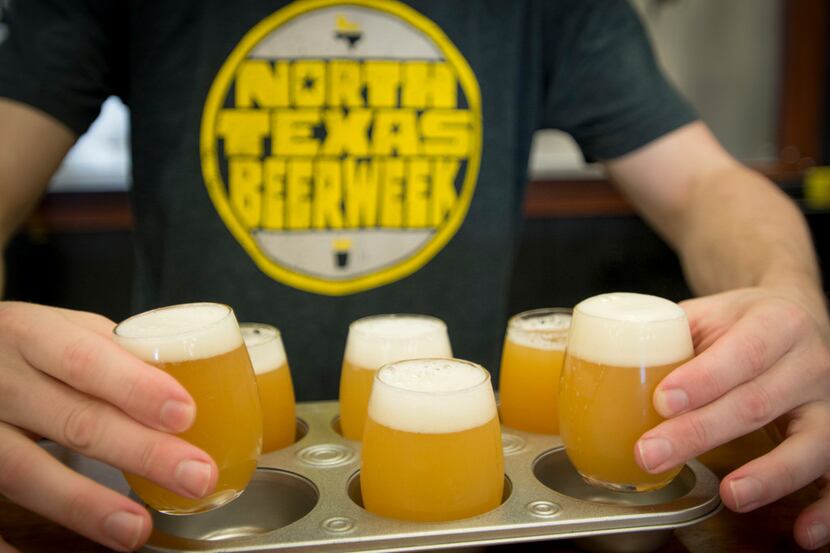Move over, OJ, there's a new juice in town.
While several styles of beer, including the witbier, maintain a characteristic cloudy or hazy appearance, American brewers have taken the presentation to the extreme in recent years with brews often so opaque, they resemble orange juice. That's not hyperbole — these straw-colored beers use specific hop varietals to produce fruity flavors that earned them the well-deserved nickname "juice."
The obsession with hazy beers started in the Northeast with a style deemed the New England IPA and fervor for beers like Heady Topper from Vermont's The Alchemist Brewery. Unlike the West Coast IPA, which is extraordinarily bitter, this East Coast variation uses hops to attain sweet and fruity notes in the aroma and taste. And because it's unfiltered, residual hop particles and proteins from other ingredients such as wheat or oats remain in the brew, giving it a hazy complexion.
Like many movements, the preference for hazy beers started as a fad, but in 2018 brewers and drinkers received vindication. In March, the Brewers Association, a trade organization that advocates on behalf of the craft brewing industry, added three new categories — juicy or hazy pale ale, IPA, and double IPA — to its prestigious competition that coincides with the Great American Beer Festival in Denver (Sept. 20-22).
The enthusiasm was undeniable. According to the association, more than 700 beers were entered for judging in the categories' inaugural year and the hazy IPA shattered the record for highest number of entries in a single category ever at 414. (The previous record, held by American-style IPA, was 331.)
"It's the new frontier," says Stephen Wagner, head brewer at Uncle Billy's Brewery and Smokehouse in Austin, which entered its Shrieking Eel IPA into the competition. "If you're going to brew a Belgian witbier, there's a right and wrong way to do it. If you want to make a hazy New England IPA, go to town. There's no saying what you can and cannot do right now."
The brews that the judges reward on Saturday, however, will likely set the standard for beers to come.

From hop to pop(ularity)
Chase Lewis, vice president of sales and finance at Tupps Brewery in McKinney, attributes hazy beers' popularity to their unsuspecting approachability. While the style is exceptionally hop-forward — Tupps used more than 100 pounds of hops in a 30-barrel batch of its competition Double Dry-Hopped IPA — hops are added later in the brewing process to extract flavor rather than bitterness. They are also often dry-hopped, meaning hops are introduced again post-brew, adding more aroma to the recipe.
Brewers use varietals such as Citra, Amarillo and El Dorado hops to create pineapple, guava, and passionfruit notes. Just a whiff of a hazy IPA can conjure images of a tropical paradise, and it's not just beer nerds who are taking a vacation.
"When we take these beers out festivals or demos and we're sampling them to people who might not traditionally consider themselves an IPA fan, they're very surprised that they really enjoy it," Lewis says. "We're kind of training people to think hops aren't bitter. They can be bitter, they don't have to be bitter, and they can provide a lot of flavor."
Andrew Huerter, head brewer at Dallas' BrainDead Brewing, says his Happiness Comes From Within hazy IPA, which he entered in GABF's competition, is his second-best seller. Wagner at Uncle Billy's calls the style "the most approachable thing you could possible call an IPA."
"It's slammable," he adds.
Hazy beers, however, aren't without critics. Some lament the style because it celebrates a byproduct of the brewing process and that "should never be the primary goal when brewing," as one brewer pointedly told CraftBeer.com.
But James Peery, co-founder of Turning Point Beer in Bedford, likes to challenge convention. His brewery specializes in New England-style IPAs and entered three into GABF's competition: Baby Legs, a pale ale; Double-Dry Hopped Extra Pulp, an IPA; and Texa$, a double IPA. His process is as much about expanding his brewing knowledge as it is about creating a tasty product.
"A lot of us who have been brewing for a while learned tradition," Peery says, "and this style, to do it appropriately, challenges what you know and to try new things and step out of the box."
But not all hazy beers are created equal, Peery admits.
"I don't believe at all that it is insulting to brewing to make a hazy beer," he says. "That being said, it depends on how the hazes comes about. If it was just a yeast slurry hanging out in the beer, then, yes, that's not right. But the haze that is created for the style ... it's a natural byproduct of brewing this style of beer."
Huerter at BrainDead agrees.
"The good ones are really good," he says, "but I've had quite a few that seem to go for aesthetic over flavor. Some of them are kind of murky tasting."
Is the craze just a phase?

When might the haze craze burn off? The Texas brewers we spoke to don't expect consumer demand to die down soon, but Lewis says the price could affect his product's sustainability. Tupps' DDH is expensive to make because of amount of hops the brewery needs to purchase, he says.
"The biggest obstacle now with these hazy IPAs is cost," Lewis says. "Being a $15 six-pack makes it difficult for a lot of every day beer drinkers to get behind."
Freshness is another hot topic leading up to the GABF competition. Hoppy beers are best when drunk fresh and some have wondered whether the hazy styles would keep in the time frame leading up to judging. For drinkers, that means what they find in stores could be less fresh or flavorful than brewer originally intended.
Julia Herz, craft beer program director for the Brewers Association, dismissed the skepticism, saying this may be a welcome test for the beers' longevity.
"At the end of the day, if the shelf life for these beers is three days, there's no way in the judging system you're actually going to meet that," she says. "Shelf life is a big thing brewers should be focused on, retailers should be focused on, and distributors should be focused on."
CORRECTION, 1:15 p.m., Sept. 20, 2018: An earlier version of this story incorrectly spelled James Peery's name.

